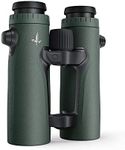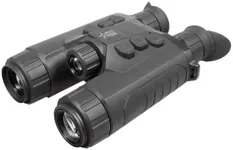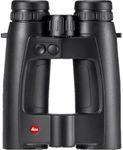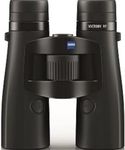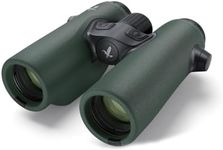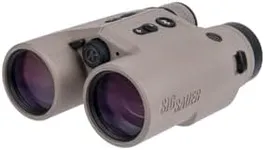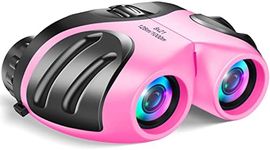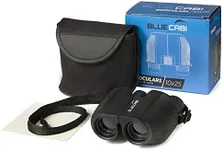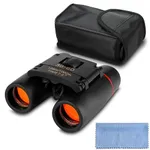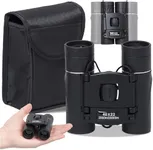Buying Guide for the Best Rangefinder Binoculars
Choosing the right rangefinder binoculars can greatly enhance your outdoor experience, whether you're hunting, birdwatching, or engaging in other activities that require precise distance measurement. To make an informed decision, it's important to understand the key specifications and how they relate to your needs. Here are the main specs to consider when selecting rangefinder binoculars.MagnificationMagnification refers to how much closer the viewed object appears compared to the naked eye. This is important because higher magnification allows you to see details from a greater distance. Typically, rangefinder binoculars come with magnifications like 8x, 10x, or 12x. If you need to observe objects at long distances, higher magnification (10x or 12x) might be suitable. However, higher magnification can also make the image shakier and harder to stabilize, so for general use or closer distances, 8x might be more comfortable.
Objective Lens DiameterThe objective lens diameter is the size of the front lenses, measured in millimeters. This spec is crucial because larger lenses gather more light, providing a brighter and clearer image, especially in low-light conditions. Common sizes are 42mm, 50mm, and 56mm. If you often use binoculars in dim environments, such as dawn or dusk, larger diameters like 50mm or 56mm are beneficial. For daytime use, a 42mm lens is usually sufficient and more compact.
Rangefinding CapabilityRangefinding capability indicates the maximum distance at which the binoculars can accurately measure the distance to an object. This is essential for activities like hunting or golfing where knowing the exact distance is crucial. Rangefinder binoculars typically offer ranges from 1000 yards to over 2000 yards. If your activities require long-distance measurements, opt for a model with a higher range. For general use or shorter distances, a lower range will suffice.
Field of ViewField of view (FOV) is the width of the area visible through the binoculars at a specific distance, usually measured in feet at 1000 yards. A wider FOV allows you to see more of the landscape, which is beneficial for tracking moving objects or scanning large areas. Binoculars with a wider FOV are ideal for birdwatching or observing wildlife. If your primary use is pinpointing specific targets, a narrower FOV might be acceptable.
Image StabilizationImage stabilization technology helps reduce the shakiness of the image caused by hand movements. This is particularly important for high magnification binoculars, as even slight movements can make the image difficult to view. If you plan to use your binoculars for extended periods or at high magnifications, choosing a model with image stabilization can greatly enhance your viewing experience.
Weight and SizeWeight and size are important for portability and comfort during extended use. Heavier binoculars can be tiring to hold for long periods, while more compact models are easier to carry and handle. Consider how you plan to use your binoculars and choose a weight and size that you can comfortably manage. For hiking or travel, lighter and more compact models are preferable.
Durability and Weather ResistanceDurability and weather resistance are crucial for outdoor use. Look for binoculars that are waterproof, fog-proof, and built with robust materials to withstand harsh conditions. If you frequently use binoculars in challenging environments, such as rain or extreme temperatures, ensure they have adequate protection to maintain performance and longevity.
